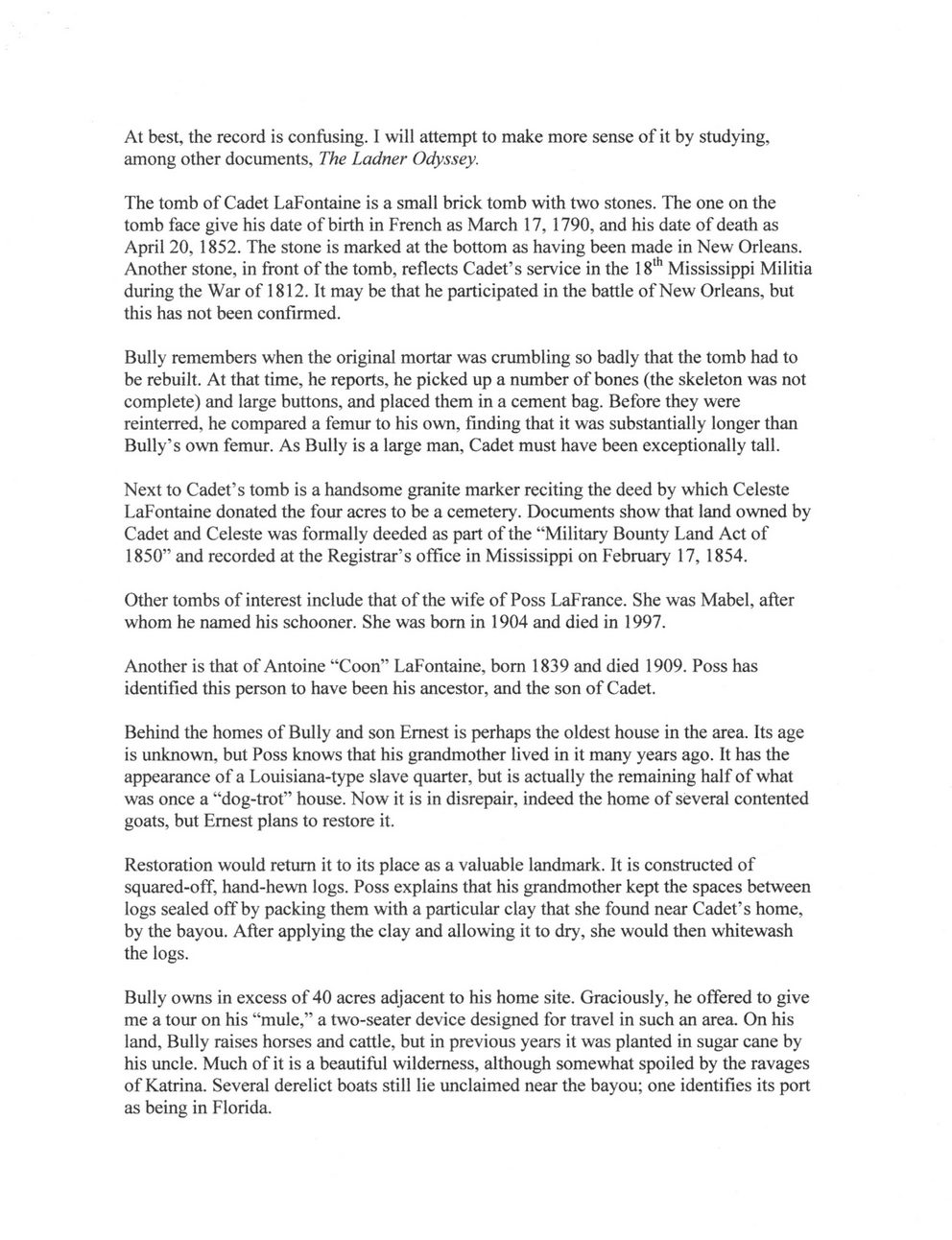This text was obtained via automated optical character recognition.
It has not been edited and may therefore contain several errors.
At best, the record is confusing. I will attempt to make more sense of it by studying, among other documents, The Ladner Odyssey. The tomb of Cadet LaFontaine is a small brick tomb with two stones. The one on the tomb face give his date of birth in French as March 17, 1790, and his date of death as April 20, 1852. The stone is marked at the bottom as having been made in New Orleans. Another stone, in front of the tomb, reflects Cadet?s service in the 18th Mississippi Militia during the War of 1812. It may be that he participated in the battle of New Orleans, but this has not been confirmed. Bully remembers when the original mortar was crumbling so badly that the tomb had to be rebuilt. At that time, he reports, he picked up a number of bones (the skeleton was not complete) and large buttons, and placed them in a cement bag. Before they were reinterred, he compared a femur to his own, finding that it was substantially longer than Bully?s own femur. As Bully is a large man, Cadet must have been exceptionally tall. Next to Cadet?s tomb is a handsome granite marker reciting the deed by which Celeste LaFontaine donated the four acres to be a cemetery. Documents show that land owned by Cadet and Celeste was formally deeded as part of the ?Military Bounty Land Act of 1850? and recorded at the Registrar?s office in Mississippi on February 17, 1854. Other tombs of interest include that of the wife of Poss LaFrance. She was Mabel, after whom he named his schooner. She was bom in 1904 and died in 1997. Another is that of Antoine ?Coon? LaFontaine, bom 1839 and died 1909. Poss has identified this person to have been his ancestor, and the son of Cadet. Behind the homes of Bully and son Ernest is perhaps the oldest house in the area. Its age is unknown, but Poss knows that his grandmother lived in it many years ago. It has the appearance of a Louisiana-type slave quarter, but is actually the remaining half of what was once a ?dog-trot? house. Now it is in disrepair, indeed the home of several contented goats, but Ernest plans to restore it. Restoration would return it to its place as a valuable landmark. It is constructed of squared-off, hand-hewn logs. Poss explains that his grandmother kept the spaces between logs sealed off by packing them with a particular clay that she found near Cadet?s home, by the bayou. After applying the clay and allowing it to dry, she would then whitewash the logs. Bully owns in excess of 40 acres adjacent to his home site. Graciously, he offered to give me a tour on his ?mule,? a two-seater device designed for travel in such an area. On his land, Bully raises horses and cattle, but in previous years it was planted in sugar cane by his uncle. Much of it is a beautiful wilderness, although somewhat spoiled by the ravages of Katrina. Several derelict boats still lie unclaimed near the bayou; one identifies its port as being in Florida.

LaFontaine, Cadet 一document-051